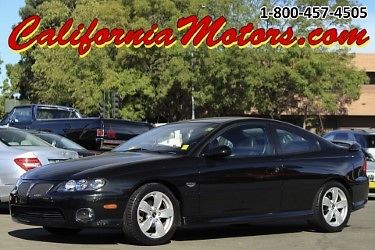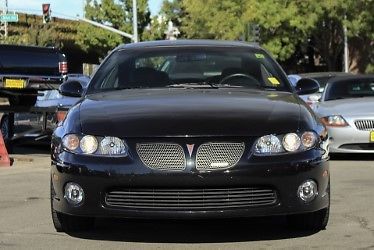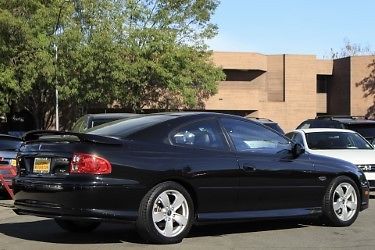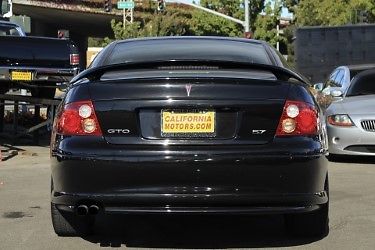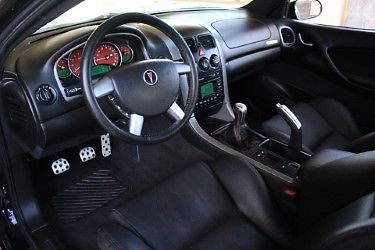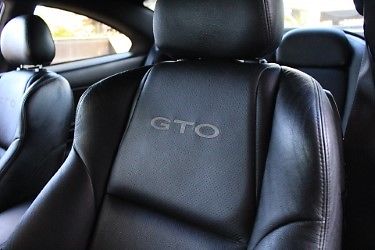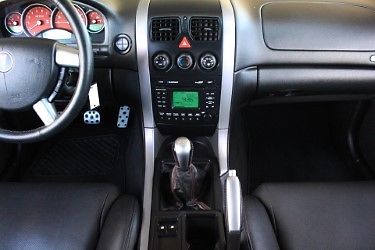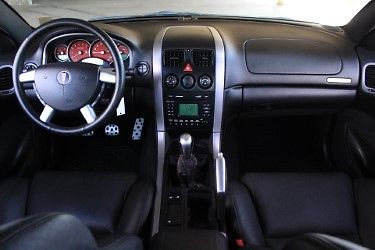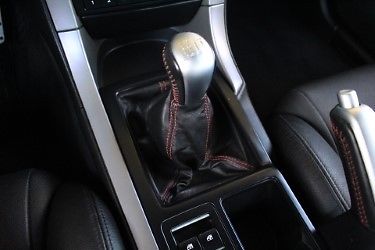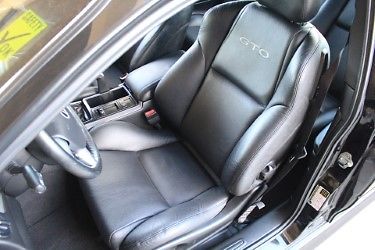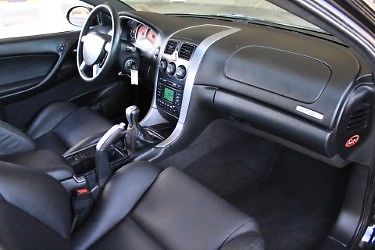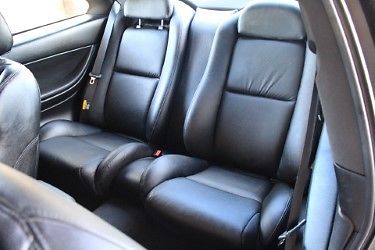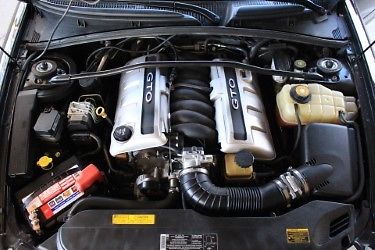Black 2004 Pontiac GTO w/ 5.7 V8 & 6-speed manual transmission & 6K miles
- Condition: Used
- Make: Pontiac
- Model: GTO
- Type: Coupe
- Trim: Base Coupe 2-Door
- Year: 2004
- Mileage: 6,700
- VIN: 6G2VX12G54L280284
- Color: Phantom Black Metallic
- Engine size: 5.7L 350Cu. In. V8 GAS OHV Naturally Aspirated
- Number of cylinders: 8
- Power options: Air Conditioning, Cruise Control, Power Locks, Power Windows, Power Seats
- Fuel: Gasoline
- Transmission: Manual
- Drive type: RWD
- Interior color: Black
- Options: Leather Seats
- Interested?
2004 Pontiac GTO Base Coupe 2-Door Description
In 2004, the Pontiac GTO was relaunched in the U.S. market in the form of arebadged, third-generationHolden Monaro.
The VZ Monaro-based GTO was Pontiac's firstcaptive importsince the 1988–1993Pontiac LeMans. TheV2/VZ Monarowas a 2-door coupe variant of theAustraliandevelopedVT/VX Holden Commodore. The Commodore had, in turn, been developed by enlarging theEuropeandesigned 1994Opel Omega B, which was marketed in its original form in the U.S. from 1997 to 2001 as theCadillac Catera. The Monaro was also exported to theUnited Kingdomas theVauxhallMonaro and to theMiddle Eastas theChevrolet LuminaSS.
The revival was prompted by former GM North America ChairmanBob Lutz, who had the idea of importing a Holden Commodore-based vehicle after reading aCar and Driverreview of the Holden Commodore SS, published circa 2000.Car and Driverpraised the performance of the V8 powered, rear-wheel drive Holden Commodore SS, but noted that even though it was one of the best vehicles that GM offered at the time, it could not be purchased in the United States. The idea of importing a rear-wheel drive Holden as a GM North American performance offering gradually transformed into importing the Monaro. Lutz, as well as other GM executives, later drove a Holden Monaro while on a business trip in Australia, which convinced them that importing the car could be a profitable venture.
Lutz had to convince GM executive hierarchy to import the car, and overcome a corporate culture that promoted regional autonomy between GM North America and its overseas divisions. This resulted in an "unnecessarily long gestation period," as Lutz put it, and at a much higher cost than anticipated. The Monaro design was introduced in 2001, but appeared "dated" in 2004 when it was released in the United States. It was also originally planned to sell for about $25,000, but by the time it was launched in the U.S., the Australian dollar's growth against the U.S. dollar had inflated the price of the car to well over $34,000. Both of these elements played a role in the car's lukewarm acceptance by the general public.
The GTO was assembled by GM'sHoldensubsidiary atElizabeth. It was equipped with the 5.7 literLS1V8 engine for the 2004 model year, the same engine found in the concurrent model year Chevrolet Corvette, with a choice of a 6-speed manual transmission or a 4-speed automatic. Changes from the Australian-built Monaro included bracing additions to the body to meet U.S. crash standards, a "corporate Pontiac" front facia, new badging, "GTO" stitching on the front seats, and a revised exhaust system. GM Engineers benchmarked the sound of the 1964 GTO held in the Pontiac historical collection, as well as other LS1-powered vehicles, while working with the exhaust vendor to tune the system. The effort was made to make the new GTO invoke the same sound as the original while still meeting the noise threshold required by some states.The 2004 GTO exhaust was a true dual system that followed the original Monaro exhaust routing, thus both tailpipes exited on the driver side of the vehicle. General Motors claimed performance of 5.3 seconds to 60 and a 13.8 second quarter mile time,which was closely verified by several magazine tests.
Initially in 2004, the car was offered in several colors: Barbados Blue Metallic, Cosmos Purple Metallic, Quicksilver Metallic, Phantom Black Metallic, Impulse Blue Metallic, Torrid Red, and Yellow Jacket.
2006 Pontiac GTOGM had high expectations to sell 18,000 units, but the Monaro-based GTO received a lukewarm reception in the U.S. The styling was frequently derided by critics as being too "conservative" and "anonymous" to befit either the GTO heritage or the current car's performance. Given the newly revivedmuscle carclimate, it was also overshadowed by theChrysler 300, theDodge Charger,Dodge Magnum, and the newFord Mustang, which all featured more traditional "muscle" aesthetics. Critics also pointed out the car's high sale price.Sales were also limited because ofdealertactics, such as initially charging large markups and denying requests for test drives of the vehicle. By the end of the year, the 2004 vehicles were selling with significant discounts. Sales were 13,569 of the 15,728 imported cars for 2004.
The hood scoops that originally were slated for production in 2005 were pushed into production as part of an over-the-counter Sport Appearance Package. The 2004 Sport Appearance Package also included a taller and more angular rear spoiler, as well as deeper inset grilles.
 2004 Pontiac GTO LS1 6-Speed Manual Transmission Rust Free Texas Car
2004 Pontiac GTO LS1 6-Speed Manual Transmission Rust Free Texas Car
Mileage: 112,000
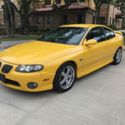 2004 Pontiac GTO 6-Speed Manual Transmission Rust Free Texas Car
2004 Pontiac GTO 6-Speed Manual Transmission Rust Free Texas Car
Mileage: 112,000
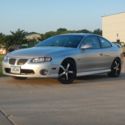 2004 Pontiac GTO 89,000 miles silver 6 speed manual black leather LS1
2004 Pontiac GTO 89,000 miles silver 6 speed manual black leather LS1
Mileage: 89,000
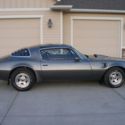 1979 WS6 TRANS AM Pontiac 400 4-speed T-top 6.6 Manual transmission
1979 WS6 TRANS AM Pontiac 400 4-speed T-top 6.6 Manual transmission
Mileage: 140,000
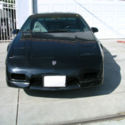 1987 Pontiac Fiero V6 with 5-Speed Manual Getrag Transmission
1987 Pontiac Fiero V6 with 5-Speed Manual Getrag Transmission
Mileage: 189,567
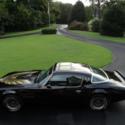 1979 PONTIAC TRANS AM......400 ENGINE....4 SPEED MANUAL TRANSMISSION
1979 PONTIAC TRANS AM......400 ENGINE....4 SPEED MANUAL TRANSMISSION
Mileage: 95,687
 1968 Pontiac GTO, 4 Speed Manual Transmission - Very Good Condition.
1968 Pontiac GTO, 4 Speed Manual Transmission - Very Good Condition.
Mileage: 1,376
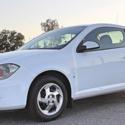 2008 Pontiac G5 Coupe 5 Speed Manual Transmission California Car ***No Reserve**
2008 Pontiac G5 Coupe 5 Speed Manual Transmission California Car ***No Reserve**
Mileage: 108,719
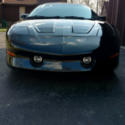 1997 Pontiac Fireburd Trans Am 6 Speed Manual Transmission 81K Excellent
1997 Pontiac Fireburd Trans Am 6 Speed Manual Transmission 81K Excellent
Mileage: 81,000
 2009 Pontiac Vibe, 18.L Base, 5 Speed Manual Transmission. Clean!
2009 Pontiac Vibe, 18.L Base, 5 Speed Manual Transmission. Clean!
Mileage: 69,090
